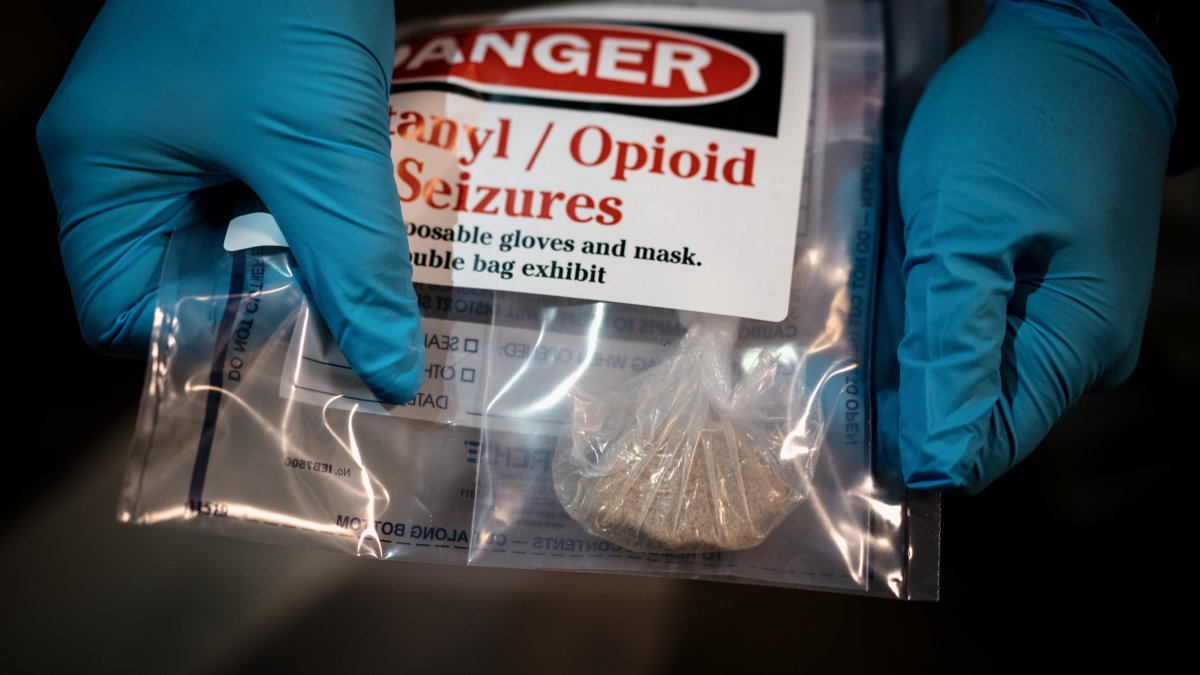"I was 14 when I started using."
After years of drug use, Amber Brown is now in recovery.
"It started out smoking weed, then started out with the pills, and gradually, it just got worse and worse," she said.
It got so bad, one day Amber went unconscious and woke up in a bathtub.
Get South Florida local news, weather forecasts and entertainment stories to your inbox. Sign up for NBC South Florida newsletters.
"Thankfully that water woke me up, but I've had some friends that weren't so lucky," she said.
Amber survived the overdose at age 18. She remembers using a mix of meth and fentanyl, but according to the Drug Enforcement Administration, a growing number of teens don't know what they're taking.
"We're seeing a lot of overdose deaths involving teens and children who think they are buying Adderall for example and it's actually a fentanyl pill," said DEA special agent in charge Deanne Reuter.
Reuter has been with the DEA for more than two decades. She said fentanyl is the deadliest drug threat we have encountered in the United States.
"Fentanyl is the most dangerous substance we have ever seen," Reuter said. "The message I would put across to anybody is do not take any pill that was not prescribed to you."
Throughout the country, 295 Americans die every day from overdoses, and 70% of those deaths involve fentanyl, according to the DEA.
In Miami-Dade alone, more than 1,300 people have died from an overdose involving the drug since 2018, with a spike at the height of the pandemic. And according to the DEA, it is now the leading cause of death nationwide for people ages 18 to 45.
"Here in South Florida, we encounter fentanyl arrests and seizures every day," Reuter said. "There is not a single day that goes by without DEA or state and local and other federal partners making arrests and seizures of fentanyl."
NBC6 got an exclusive look inside a DEA lab where drugs seized from five states and the Caribbean are tested.
While our cameras were at the lab, chemists tested a white brick seized in Florida. Within minutes, analysis showed the brick had high levels of fentanyl mixed with some sugar.
"You don't have now a sample with just one drug or two drugs. Now you have a multitude of drugs," said DEA lab director Agnes Winokur.
Two milligrams is enough to kill an adult — but the catch is when you take a pill, you don’t know how much fentanyl is in that pill.
"Even with my experience of over 25 years, I cannot look at a tablet and tell you this is a real pharmaceutical tablet or it is an illicitly manufactured tablet," Winokur said.
Also of growing concern is marijuana laced with fentanyl.
"What we are seeing in our community response teams that we attend is there are hydroponic labs that are actually growing marijuana and spraying them with water that's contaminated with fentanyl, which causes it to grow within just regular marijuana," said Susan Nyamora of the South Florida Wellness Network.
"Our DEA labs have seen synthetic marijuana laced with illicit fentanyl," Reuter said.
As the DEA ramps up community outreach with its One Pill Can Kill campaign, local groups like the South Florida Wellness Network are also working to raise awareness. The Broward County-based organization specializes in recovery support.
"Be open to having discussions with your young people, more specifically, because as we enter this era of technology and social media, there's not a lot of conversation happening, and if they listen close enough, the warning signs are there," Nyamora said. "You can tell by what's happening with young people. We can see it here. People come in here and they don't have food to eat or the pressures of not having the right shoes or the cost of living."



